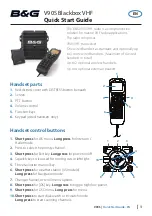
______________________________________________
HARRIS
888-9058-001
WARNING: Disconnect and lockout AC primary power prior to servicing
26
and Output, I/O. It gathers status and fault data from the individual sub-systems and reports
that information to the operator locally and by remote control.
1.3.1.2 PA Cabinet Slave Controller
This board interfaces with the module and power supply controller boards to transfer
information to the main controller. It also has control functions related to that PA
cabinet. Refer to paragraph 1.2.6.
1.3.1.3 RF Module Controller
A logic and control board responsible for protection and control of the one RF Driver or
PA Module that it is part of.
1.3.1.4 50 RF Module Power Supply Controller Board
Responsible for control and monitoring of the 50V RF amplifier power supplies.
1.3.2 Control Cabinet.
The control cabinet contains a digital exciter, and an optional second Exciter. The RF
signal path includes an optional exciter switcher, automatic gain control module and phase
and gain modules when more than one PA cabinet is used. The main controller and the GUI
are part of the control cabinet. The RF drive levels to the PA cabinet input(s) are in the 25
to 100mW range.
1.3.2.1 Exciter Switcher
If optional dual exciters and an Exciter switcher are used, both exciters are fed video and
the appropriate sound signals. Each Exciter's RF output feeds a logic controlled coax
switch. The selected Exciter signal in a single PA cabinet system then goes to the AGC.
When more than one
PA cabinet is used the AGC output is connected to one or more Phase and Gain units.
1.3.2.2 Transmitter AGC Module
The single Exciter output/exciter switcher output to the transmitter AGC module, whose
job is to maintain a constant drive level by monitoring a sample of transmitter output, and
correspondingly controlling PA cabinet input drive.
1.3.2.3 Phase and Gain
In transmitters with multiple PA cabinets, the AGC module is followed by one or more
phase and gain modules. Each phase and gain module splits the drive into two signals
whose relative amplitude and phase are adjustable. This allows trimming to compensate for
small gain and phase differences between cabinets, so that the PA cabinet outputs maintain
the proper phase and amplitude relationships when combined in the following 3 dB or 4.77
dB hybrid combiner(s). Phase and Gain units are adjusted for minimum hybrid reject load
power.















































